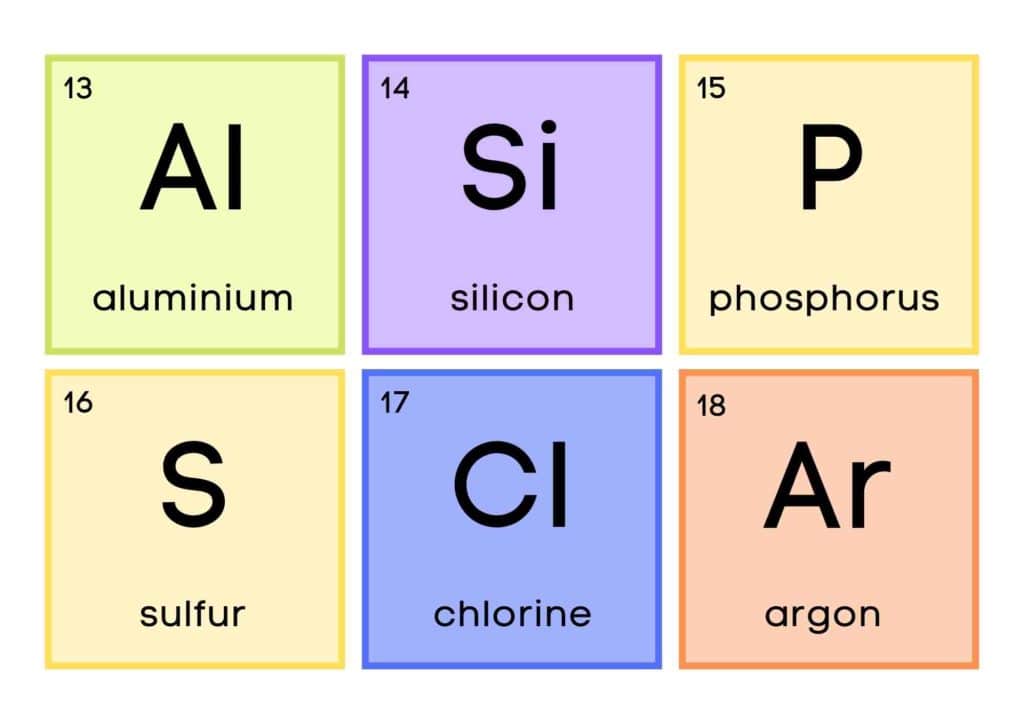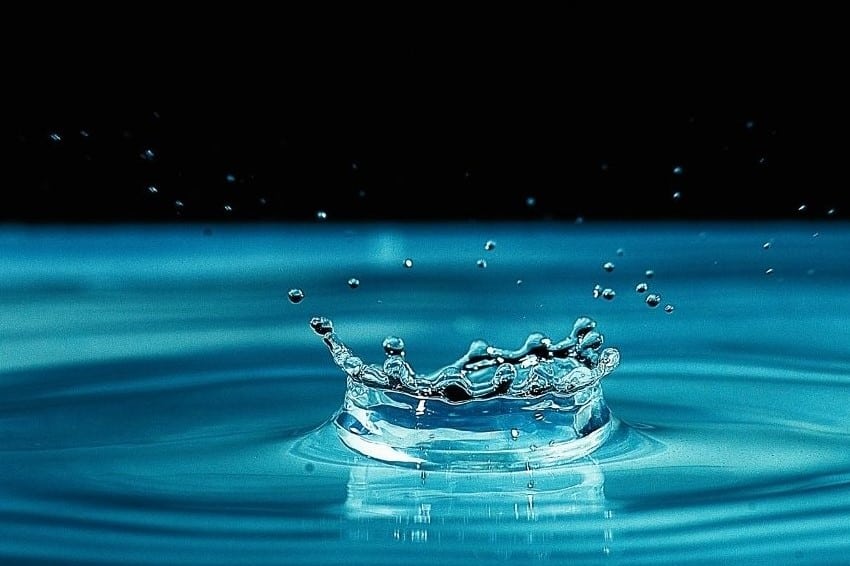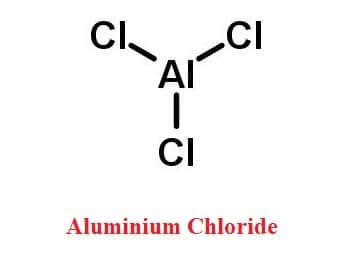Chlorine (Cl) is a nonmetal.
Chlorine is the second lightest member of the halogen elements or Group 17 (Group VIIa) of the periodic table. Chlorine is nonmetal since it lacks metal-like properties such as electrical conductivity, flexibility, and strength. Oxygen, carbon, and sulfur are some other nonmetals that are comparable. Furthermore, elemental chlorine is a bimolecular gas under normal circumstances. It is an oxidant because it takes electrons, which is a characteristic attribute of a nonmetal.

At room temperature, chlorine is a yellow-green gas. Chlorine has a harsh, unpleasant odor that is discernible even in low quantities, akin to bleach. Because chlorine gas has a density of approximately 2.5 times that of air, it will initially congregate near the ground in areas with little air movement.
| Name of element | Chlorine |
| Group in the periodic table | Group 17 |
| Atomic number | 17 |
| Molar mass | 35.453 g·mol−1 |
Table of Contents
Why Chlorine is a nonmetal?
Chlorine is a nonmetal. Metals are malleable and good conductors of heat and electricity. Nonmetals are (typically) poor conductors of heat and electricity, and they are neither malleable nor ductile; many basic nonmetals are gases at ambient temperature.
Nonmetals have far greater electronegativities than metals; fluorine is the most electronegative of the nonmetals, followed by oxygen, nitrogen, and chlorine.
The noble gases are all monatomic, whereas the other nonmetal gases—hydrogen, nitrogen, oxygen, fluorine, and chlorine—exist as diatomic molecules. H2, N2, O2, F2, and Cl2. The other halogens are also diatomic; under normal conditions, Br2 is a liquid and I2 is solid.
Is Chlorine a noble Gas?
Chlorine is not a noble gas. Gases in groups 8A (or VIIIA) and 0 are called noble gases, and they have octet or duplet configurations. On the other hand, chlorine is a halogen and thus belongs to group 17.
In addition, noble gases like He, Ar, Xe, and Kr are stable inert gases with 8 electrons in their outer shell.
Chlorine is an extremely reactive gas. It is an element that occurs naturally. Companies that manufacture ethylene dichloride and other chlorinated solvents, polyvinyl chloride (PVC) resins, chlorofluorocarbons, and propylene oxide are the main users of chlorine.
Chlorine Atom Electron Configuration
Chlorine has an atomic number of 17. That is, chlorine contains seventeen electrons. As a result, the chlorine atom will have two electrons in the first shell, eight electrons in the second orbit, and seven electrons in the third orbit. As a result, the number of electrons in each shell of a chlorine (Cl) atom is in the following order: 2, 8, 7.
Summary
Chlorine is classified as a nonmetal since it lacks metal-like qualities such as electrical conductivity, flexibility, and strength. Noble gases, such as He, Ar, Xe, and Kr, are stable inert gases containing 8 electrons in their outer shell. Chlorine is a halogen and so belongs to group 17. Chlorine is an extremely reactive gas.
Related Links
Is Nh3 Polar?
Is HCl Polar or Nonpolar?
Is MgCl2 Ionic or Covalent?
Perchloric acid| Is It Super Acid?
How many valence electrons are in a silicon atom?
Is HCN Polar or Nonpolar?
Frequently Asked Questions
1. Is MgCl2 ionic or covalent?
An ionic connection is formed between the magnesium and chlorine atoms when the magnesium atom loses two electrons to create the Mg2+ ion and each chlorine receives one electron to form the Cl– ion.
Check “Is MgCl2 ionic or covalent?”.
2. Is SiCl4 polar or nonpolar?
SiCl4 (silicon tetrachloride) is a nonpolar molecule. Because the four chemical bonds between silicon and chlorine are uniformly distributed, SiCl4 is non-polar. A polar covalent bond is a type of covalent link that is intermediate between pure covalent bonds and ionic bonds. Such bonds occur when the difference in electronegativity between the anion and the cation is between 0.4 and 1.7.
Check the full article here“Is SiCl4 polar or nonpolar?”.
3. Is CO2 a pure substance?
CO2 is a pure material since its composition remains constant regardless of where it is collected. Each carbon dioxide molecule will always have one carbon and two oxygens.
4. delocalized pi bond?
A delocalized pi bond is one in which electrons can flow freely between more than two nuclei.
5. What is a mu sign?
Mu (μ) is a unit prefix in the metric system that denotes a factor of 10−6. (one millionth). The symbol is also used to symbolize magnetic permeability, which is a measure of how many magnetic lines of flux a substance concentrates.
6. What is atmospheric pressure at sea level at 1 atm?
Atmospheric pressure is the pressure exerted on objects from the air or the Earth’s atmosphere.
The average value for the atmospheric pressure at sea level is defined as 1 atmosphere (atm).
7. paramagnetic materials?
Metals that are weakly attracted to magnets are known as paramagnetic materials. Among them are aluminum, gold, and copper. The atoms of these compounds include electrons, the majority of which spin in the same direction, but not all. This gives the polarity of the atoms. These metals may produce very weak magnets because some of the atoms can be rotated to point their poles in the same direction.
8. What is calcium’s electronic configuration?
Calcium electron configuration is 1s2 2s2 2p6 3s2 3p6 4s2
9. How many electrons does helium have?
A single helium atom has two protons, two electrons, and two neutrons. The second element in the periodic table is helium. Because s subshells may store up to two electrons, both electrons fit into the 1s subshell, resulting in the electron configuration for helium atoms being 1s2.
More Interesting Links
is b2 paramagnetic or diamagnetic?
How many electrons does oxygen have?
SiO2 Lewis Structure| Step By Step Construction
Is Titanium Magnetic?
HCN Lewis Structure & Molecular Geometry
- BCl3 Lewis Structure in four simple steps - November 1, 2023
- PH3 Lewis Structure in four simple steps - October 8, 2023
- PF3 Lewis structure in four simple steps - September 24, 2023



